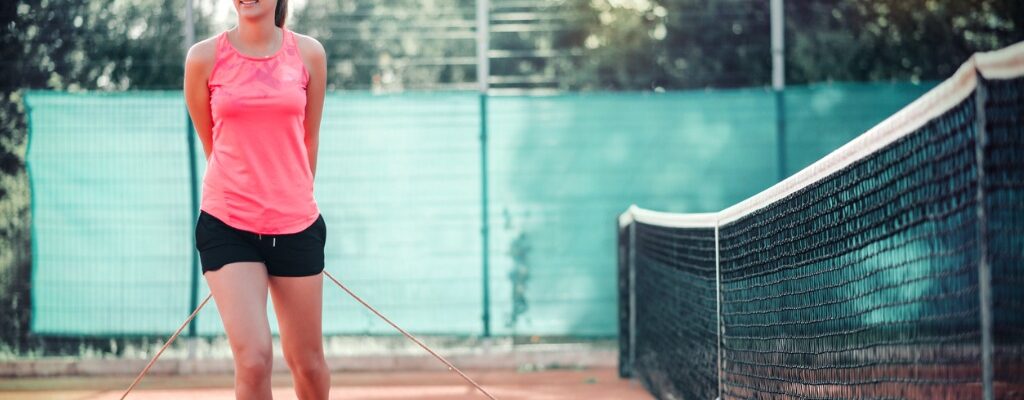Proper tennis court construction and maintenance are essential to a quality playing surface. When regularly maintained, tennis courts will give you more return on your investment, be safer to use, and provide a more enjoyable playing experience. However, not all tennis courts are the same in their maintenance requirements. Here is what you need to know about the need for tennis court maintenance and how to address it depending on the type of surface you have.
Why it’s Necessary to Maintain Your Tennis Courts
Even if you’ve invested in a more durable artificial or clay tennis court, regular maintenance is vital. Here are several reasons why you should make tennis court maintenance a priority:
- Safety — Keeping your hard or clay tennis court maintained ensures that the surface is even and safe. Otherwise, you or another player could turn an ankle, slip, or trip while playing.
- Beauty — Tennis courts are made to serve a particular function. However, they can also be beautiful additions to a property. When they are well-maintained, your tennis courts can add value and improve your quality of life.
- Longevity — Standing water and debris left on a court will lead to extensive damage over time and higher costs to repair or resurface the court. Regular removal of water and sweeping can prevent mold and mildew accumulation. It can also help you spot and repair minor issues that could become costly repairs if not addressed as promptly as possible.
- Performance — It’s easier to play on a well-maintained court than one full of cracks, mold, and rubble: the better the playing conditions, the more enjoyable the experience.
Tennis Court Maintenance for Asphalt Courts
If you have an asphalt tennis court, follow these tips for regular maintenance and repair:
- Keep the court clean. A dirty tennis court will likely suffer premature deterioration. Regularly remove debris, leaves, dust, and grass from the court and the edges. We also recommend using weed killer from time to time.
- Avoid using high-pressure power washers on hard surface courts. It can cause damage. Instead, use water and a mild detergent.
- Regularly inspect and clean the drain areas around the court. Water penetration is a significant cause of damage to asphalt surfaces. Check all drains for breaks and leaks and repair them appropriately.
- Inspect your court’s condition annually. Your annual inspection should look for any peeling, cracking, or other forms of damage.
- Caulk and seal the court’s expansion joints to prevent water from penetrating below the slab. This can prevent settlement or heaving issues that require costly repairs.
- Fix cracks in the court’s surface as soon as you notice them. This is more affordable than waiting until the court requires resurfacing.
- Tend to the landscaping around the court to ensure it isn’t causing draining or structural issues due to things like underground roots.
- If the court has structural problems, such as foundation settlement, or cracks throughout the slab, it’s good to consider having the court redone.
Tennis Court Maintenance for Clay Surface Courts
Maintenance for clay tennis court surfaces can be broken down into what you should do daily, periodically, and annually. The needs of your particular court may vary, but this is a general guideline for the maintenance of clay surface courts:
Daily Maintenance
- Brush and redistribute any top material loosened due to play or wind. Avoid using a broom with hard bristles that could damage the surface. Use a sweeping brush or a drag brush with soft bristles instead.
- Water the court to keep it stable and firm. Most clay courts require twice-daily watering. However, you can skip this if the court already seems moist.
- Give the court firmness and secure loose top materials by rolling it. You can do this every other day if the court seems well-compacted.
Periodic Maintenance
- Address any irregularities that develop in the court over time.
- Fill in low spots and divots, as well as areas on the court that are too high.
- Fix slippery areas by addressing drainage issues.
- Ensure no one uses harsh fertilizers or other chemicals near the court that could damage the surface.
Annual Maintenance
- Fully clean and level the court annually.
- Assess whether it’s time to apply a new top dressing.
- Install fresh, slip-resistant tape.
- Complete any in-depth repairs necessary.
Tennis Court Maintenance for Grass Courts
Grass tennis courts are a bit more old-school and rare. They’re also much more high-maintenance than hard surface tennis courts.
If you have a grass tennis court, here are some maintenance steps:
- It needs to be mowed every 2-3 days to maintain a grass length of between ¼ and ⅓ of an inch.
- The surface should be watered after each use.
- A ballast roller should be used to compact the surface weekly.
- The grass should be well-fertilized since brown or dry grass can be slippery and a safety hazard.
Quality Tennis Court Construction and Maintenance Services
If you are thinking about building a tennis court or would like your current one maintained, McConnell & Associates can help. We offer high-quality tennis court construction and maintenance services, as well as a complete line of tennis court accessories.
Tennis court construction, repair, and maintenance are highly specialized. The formula for driveway or roadway material is much different than what you would use to create an ideal playing surface. If you want a tennis court that is attractive, functional, and made from high-quality materials, make sure the company you hire to do the work is reputable.
Our tennis court maintenance services include regularly scheduled inspection and maintenance, crack fill and color coating, clay court reconditioning, and preventative maintenance and sealing. Contact us today to find out more about how our services can keep your tennis court in top shape.


.png)


